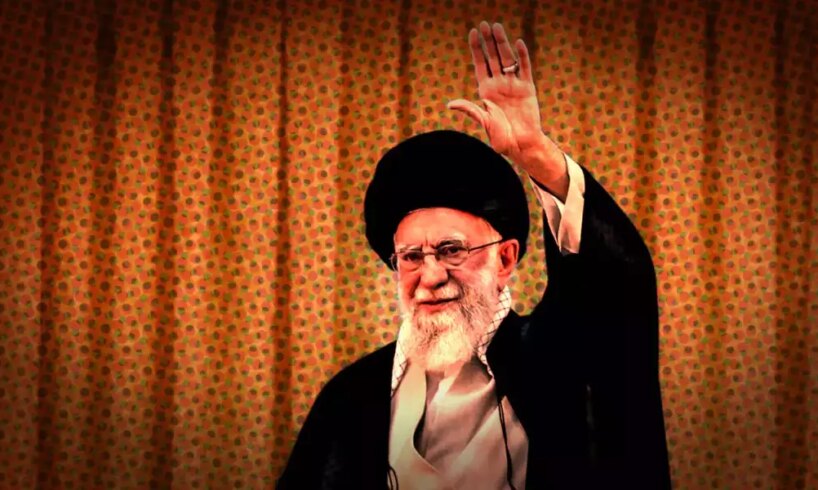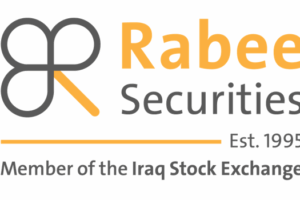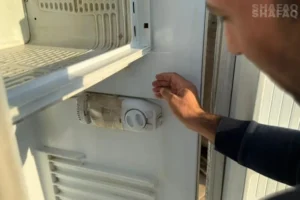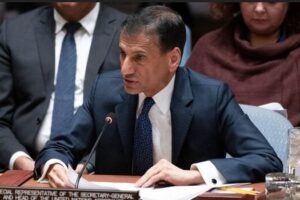
With the Gaza war over, Iran is tallying two turbulent years that pulled it into a wider circle of fighting and fire, contrary to the restraint Tehran had sought to maintain before the war. In the wake of the shock delivered by Israel in the Israel-Iran war, known as Operation Rising Lion in Israel, and the heavy blow to its proxy network, it appears Iran is taking steps to rebuild its deterrence, and is signalling an intent to renew its “ring of fire” around Israel.
That decision comes amid rising external pressure, including the activation of the Security Council snapback sanctions mechanism, and a sense of trauma in Iran after having been surprised by Israel.
The first worrying sign from Iran: Tehran appears focused on increasing the range of its ballistic missiles to intercontinental distances, meaning 5,500 kilometers and beyond. MP Mohsen Zanganeh told Iranian television recently that the unidentified lights seen in Iran’s skies two days earlier and which stirred public curiosity were in fact a successful test of an intercontinental missile. It may have been the Khorramshahr-5 ballistic missile, reportedly capable of 12,000 kilometers, which Defense Minister Nazirzadeh said has not yet entered operational service.
Iranian Foreign Minister Hossein Amir-abdollahian denied Prime Minister Benjamin Netanyahu’s claim after the test that Tehran is working on intercontinental missiles that would allow it to threaten Washington and New York. However, Ahmad Bakhshaish Ardestani, a member of the parliament’s Foreign Affairs and Security Committee, confirmed the report. In an interview with Iranian media he said Supreme Leader Ali Khamenei removed a previous limit that kept Iran’s missile range under 2,200 kilometers, and that Iran is now developing its missile program as far as it wishes, because it must strengthen what he called its most important military power, namely its missile program.
Missile launch by Iran’s Revolutionary Guard (archive photo). Photo: EPA EPA
The second worrying sign from Iran: alongside talk of intercontinental missiles, pressure is growing within the regime on Khamenei to approve production of nuclear weapons. Last week Ali Shamkhani, a senior adviser to Khamenei and a long-time manager of Iran’s nuclear program, urged the regime to develop nuclear weapons, saying it would have been better if Iran had developed such weapons in the 1990s. Earlier, on September 22, it was reported that 70 members of parliament sent a letter to the Supreme National Security Council, the high body that makes the regime’s strategic decisions, demanding permission to develop nuclear weapons. The MPs emphasized their request is to authorize possession and development of such weapons for deterrence purposes, but not to use them.
At the same time, nuclear scientist Mahmoud Reza Aghamiri, president of Shahid Beheshti University in Tehran, which is under US and European sanctions because of links to the nuclear program, said last week that if one day Iran is required to build an atomic bomb, it could do so well. He added Iran has the capability and resources to develop nuclear weapons, but that it does not intend to do so.
Iran’s nuclear facilities (Archive), Photo: AFP
The third worrying sign from Iran: alongside the two previous moves, Tehran is signalling a determination to rebuild its proxy network despite the major changes the war has caused in the Middle East. As revealed by the Mossad’s Persian-language account on X, Abdollah Saberi has been appointed to replace Saeed Izadi, who was eliminated in Operation Rising Lion, as head of the Palestine branch of the Quds Force. In that role Saberi will be responsible for rebuilding Hamas and the Islamic Jihad in the Gaza Strip, in Lebanon and in Syria.
Saberi is expected to rely on Unit 840 of the Quds Force, the unit responsible for special operations which in recent years the IDF and Shin Bet foiled in attempts to smuggle advanced, game-changing weaponry to terrorist actors in Judea and Samaria; on Unit 340, the Quds Force’s technical assistance unit that provides know-how and technological equipment for Iran’s regional networks; and on Unit 190, which is responsible for smuggling arms to the network, whose commander Henam Al-Hiryari was also killed in Operation Im Keliv.
Tehran sees cultivation of the so-called “Axis of Resistance” as essential to its national security. That idea was echoed recently by Parliament Speaker and member of the Supreme National Security Council Mohammad-Bagher Ghalibaf, who explicitly expressed the Iranian aspiration to renew the ring of fire around Israel. He argued that if Iran does not fight Israel on the Golan front, Israel will fight Iran on its own borders. He also stressed that Iran’s route for transferring support to Hezbollah remains open, even if it has become more difficult in light of regional changes, a sign of Iranian motivation to rebuild Hezbollah and reinvigorate the organization. Commander of the Islamic Revolutionary Guard Corps Navy Ali-Reza Tangsiri recently boasted of Tehran’s ability to export missiles, unmanned aerial systems and warships.
Hezbollah terrorists at the funeral of Ibrahim Aqil (archive). Photo: AFP AFP
The trauma is still here
This trend is also apparent in the Islamic Republic’s response to a message Russian President Vladimir Putin recently conveyed from Prime Minister Netanyahu that Israel does not intend to renew the war against Iran. Foreign Minister Abbas Araghchi said Iran’s forces remain on alert for the possibility of a renewed war, because it is quite likely that this is an Israeli deception.
At the same time, in an effort to curb a sharp fall in the national currency and to tamp down unrest that could spark protests, the regime is sending calming messages to its public. Security officials told the media that the enemy will not dare to renew the war and that the likelihood of such a resumption is small. Armed Forces Chief of Staff Mohammad Bagheri and IRGC commander-in-chief Mohammad Pakpour emphasized in statements to the media that Iranian forces are fully ready for a powerful fight against any kind of threat or aggression.
Damage in Iran. Photo: AFP AFP
Where is Tehran headed?
And what does the Supreme Leader say? In a speech last month, Khamenei argued at length that resuming negotiations with the US would be a move whose harms outweigh its benefits, because it would amount to capitulation to President Trump and would bring further US demands on missiles and other areas.
Nevertheless, the moderate and reformist camps are questioning his policy, as evidenced by sharp criticism of the decision to reject an invitation for President Pezhakian to attend a summit hosted by Trump in Sharm el-Sheikh. In their view, his participation could have opened a door to renewing talks with the US and easing tensions. However, given Khamenei’s deep suspicion and lack of trust in Trump, it appears for now the Iranian leader will continue to set strict conditions for resuming talks and will push a policy designed to weather the Trump era.
US President Donald Trump (L) and Iran’s Supreme Leader Ayatollah Ali Khamenei (R) Reuters
In light of these developments, Israel should prepare for the possibility that Iran will return to Syria, especially in a scenario where Khamenei is persuaded by hard-line officials calling for development of nuclear weapons. Iran’s attempt to upgrade its missile program and restore the “Axis of Resistance” demonstrates once again that Tehran will remain at the center of Israel’s strategic calculations.
Domestic support for developing nuclear weapons, Iran’s growing international isolation, the missiles Tehran is trying to develop against the West and, for now, the end of the Gaza war all give Israel an opportunity to strengthen its strategic partnership with the US under President Trump. Accordingly, Israel should work to expand that partnership to leading European states, a move that would build broad cooperation against Iran, deepen pressure on Tehran and legitimize kinetic and economic action against it.





